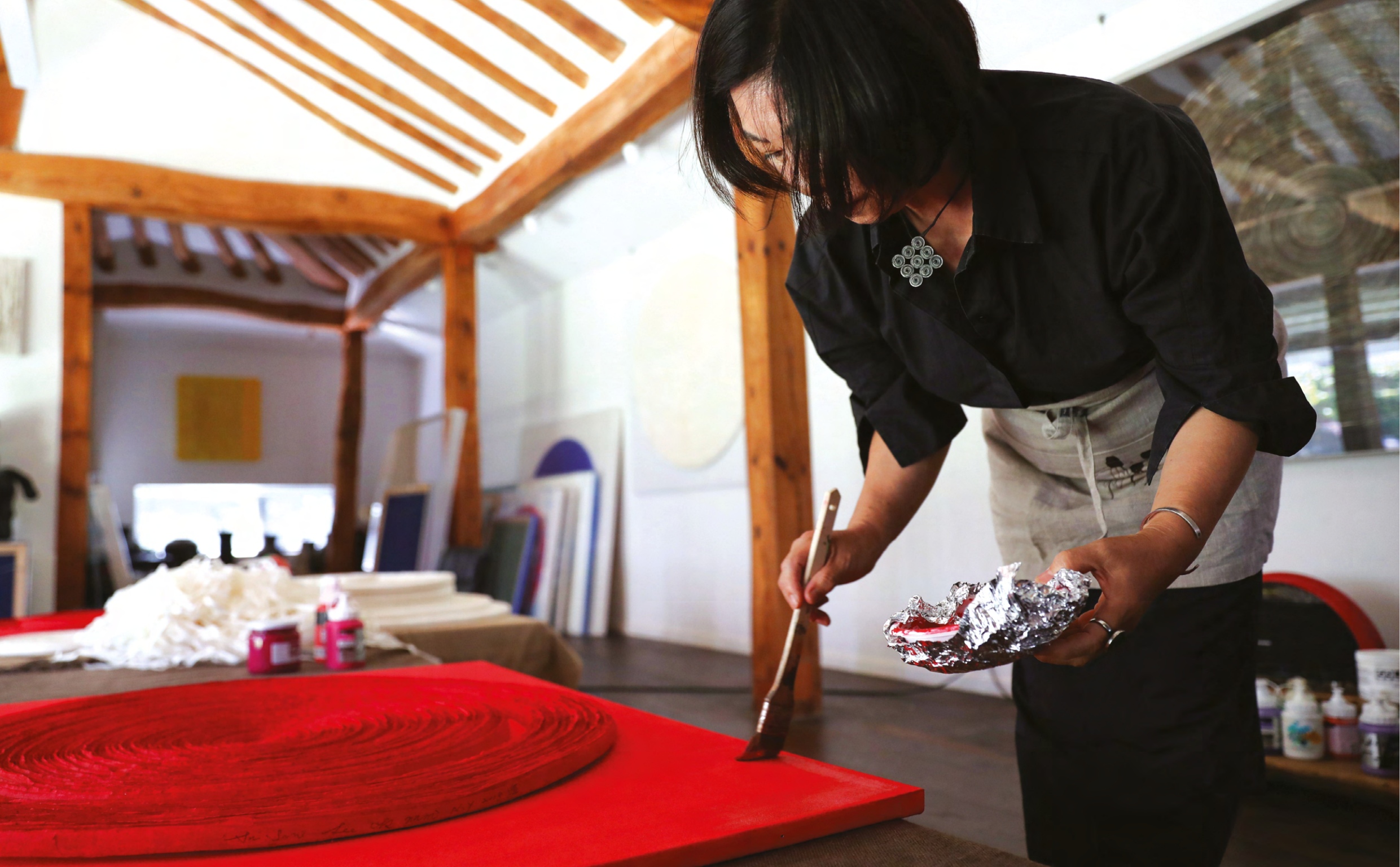Lee Ok Nam focuses on her work as a devoted disciplinant would, through the repetitive process of cutting and pasting pieces of paper. This intricate process is achieved using newspapers and Hanji at regular intervals. Her work is like an autobiography that encompasses the long narrative of her life. Through an accumulation of time containing all of life’s past journey. Knowing she wouldn’t be able to tell anyone about her suffering, she began to concentrate on her work with an attitude of self reflection and repentance. This pursuit to find comfort and peace of mind, paradoxically led her to become the established artist she is today. Her work, which looks minimalistic at first, actually can be interpreted as ‘process art’, a kind of conceptual art. Thus highlighting her auteurism, subjectivity, and agentivity that transcends regular painting works seeking only visualism. Through repetitive actions in her work, Lee Ok Nam’s mind explores a process of being integrated with the artwork allowing the spirit of an artist to become one with all kinds of objects. This immersive experience, expands the individual’s thinking into the infinite realm based on the ‘process-oriented’ thinking of oriental spirituality.
At a time when multimedia communication was not as developed as today, newspapers were the only means thought which the artist could hear news of her homeland while abroad. Fittingly becoming the beginning material used in the series Wave that is representative of Lee Ok Nam’s work. While she was abroad, she only saw the world through newspapers and believed everything in the papers to be true. However, false information in the unverified media took a toll on her. An experience that resulted in a sense of shame and guilt. Tearing up the newspaper seemed the Wave only means to atone for the past : a self-reprimanding work that served as self-inflicted punishment and at the same time an effort to forgive oneself. When she had finished wrapping the last strip onto the huge circle of rolled up newspaper with a diameter of 110cm, she was finally able to free herself from the guilt that had been holding her down. Regarding this work, she said “It’s a way to collect all the noisy sounds of the world and make them to sleep quietly.”
After condensing all the painful time and putting it in her work, the artist’s emptied heart felt brand new, like pure white Hanji. Signaling the possibility of a new beginning. Afterwards, the series Wave took on various shapes according to the artist’s emotions like joys, angers, sorrows and pleasures. The faintly rising heart of atonement fluctuates in purple, moments of joy vigorously burst open in red like a camellia flower, happiness turns into brilliant golden yellow, and a praying mind longing for peace sends out waves of blue from the deepest corners of her heart. The different heights of paper waves, move outwards from the center of the circle contain the artist’s emotions at every moment. Literally they are ‘The Waves of Mind’. In particular, the audience may experience comfort when identifying with the artist’s narrative and feel how the work appeals to our deepest emotions. An experience that would be consistent with the artist’s sentiments. The artist now wants to give comfort to those who are weary and need to overcome various difficulties in life. By sending out a message about the endless possibilities of life, true happiness and the attitude we need to reach it.
